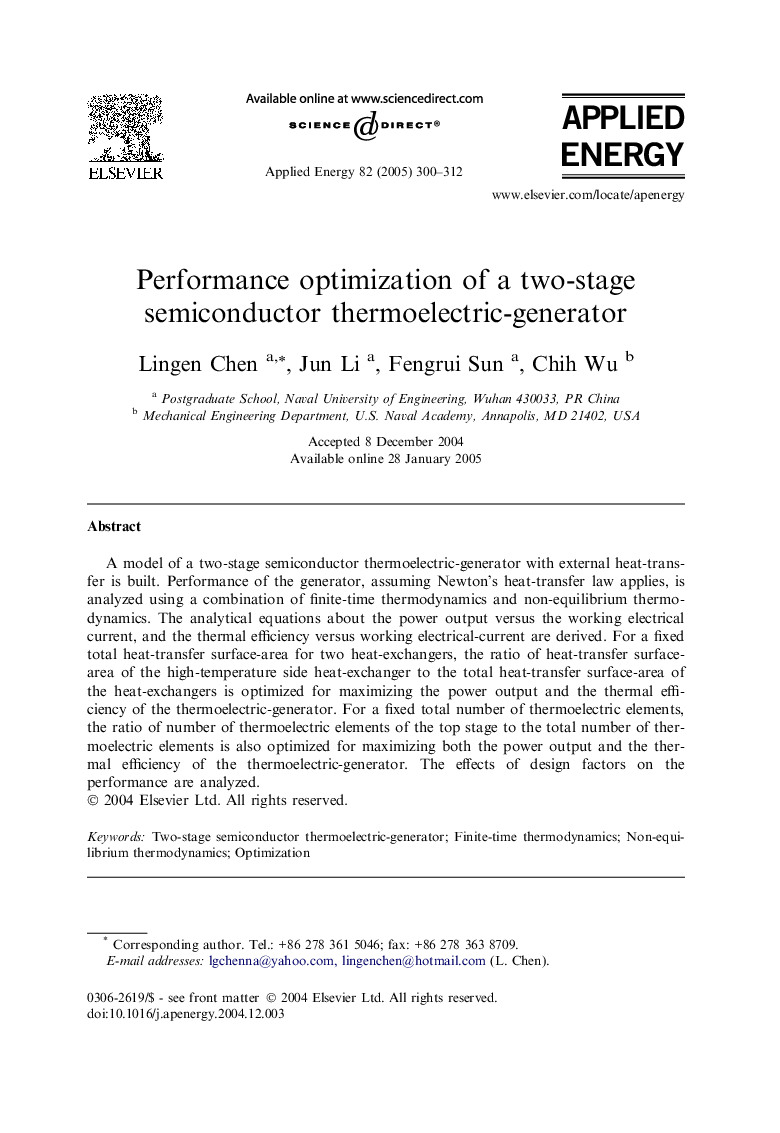| Article ID | Journal | Published Year | Pages | File Type |
|---|---|---|---|---|
| 10282113 | Applied Energy | 2005 | 13 Pages |
Abstract
A model of a two-stage semiconductor thermoelectric-generator with external heat-transfer is built. Performance of the generator, assuming Newton's heat-transfer law applies, is analyzed using a combination of finite-time thermodynamics and non-equilibrium thermodynamics. The analytical equations about the power output versus the working electrical current, and the thermal efficiency versus working electrical-current are derived. For a fixed total heat-transfer surface-area for two heat-exchangers, the ratio of heat-transfer surface-area of the high-temperature side heat-exchanger to the total heat-transfer surface-area of the heat-exchangers is optimized for maximizing the power output and the thermal efficiency of the thermoelectric-generator. For a fixed total number of thermoelectric elements, the ratio of number of thermoelectric elements of the top stage to the total number of thermoelectric elements is also optimized for maximizing both the power output and the thermal efficiency of the thermoelectric-generator. The effects of design factors on the performance are analyzed.
Related Topics
Physical Sciences and Engineering
Energy
Energy Engineering and Power Technology
Authors
Lingen Chen, Jun Li, Fengrui Sun, Chih Wu,
